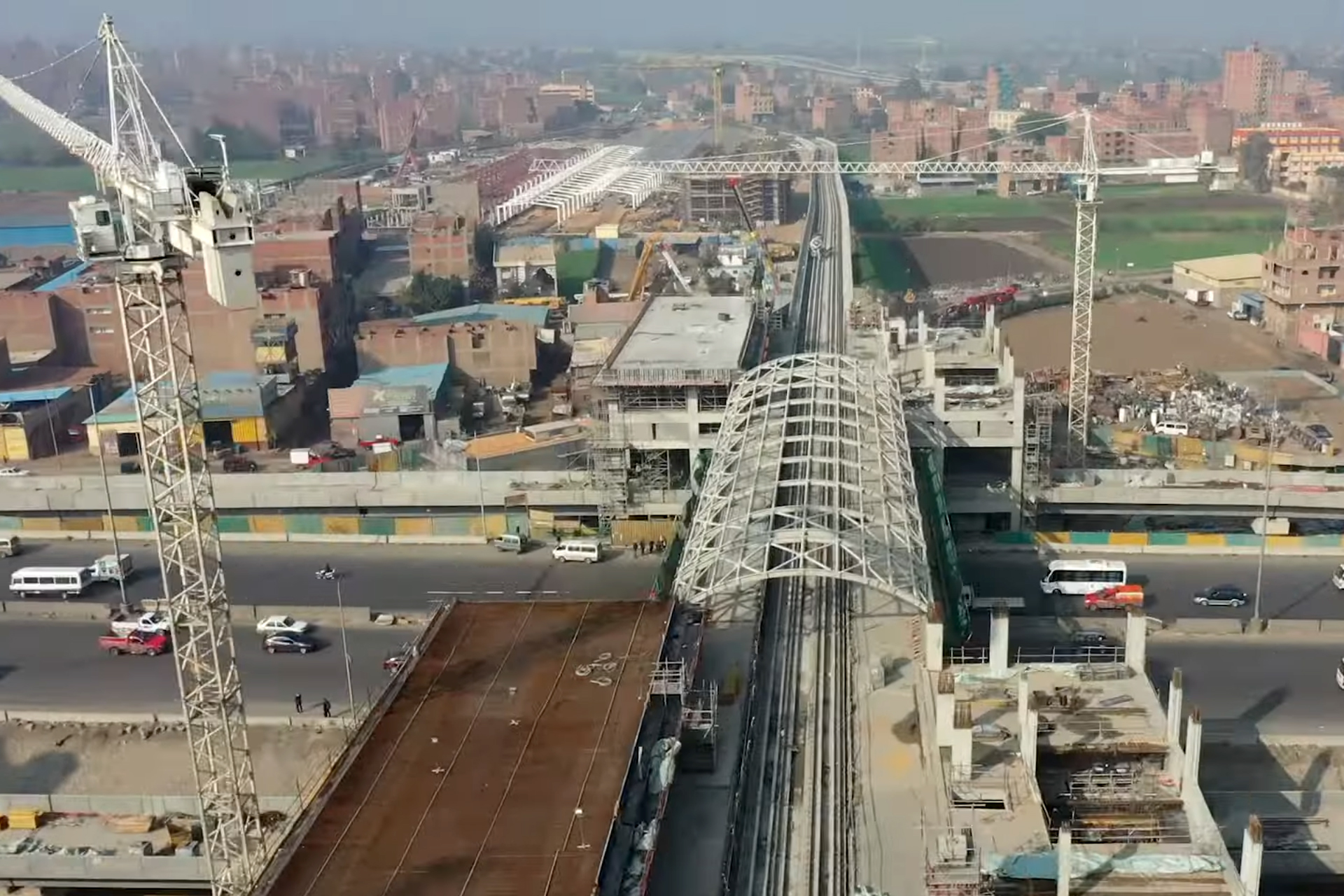Similar to the incident of the balcony bridge (the balcony) that was raised in Egypt during May 2020, activists and tweets circulated recent photos of construction work on the metro track, a few meters away from buildings and residential buildings in Giza Governorate, in the north of the country.
Hours after its publication, the official page of the Giza Governorate deleted pictures of the construction work of the Imbaba metro station from its official page, after it was subjected to criticism and sarcastic comments.
Al-Ahram Governmental Gate and other local media published pictures of the construction work of the metro station, which has not yet been opened, which sparked a state of controversy and ridicule on the communication sites, after the metro track appeared near the residential buildings and buildings.
The Imbaba metro station is included in the third phase of the third line of the Cairo Metro, and this phase includes 15 stations.
Pictures circulating on various social media platforms show the approach of the metro line to the balconies of the houses, as well as the path surrounding the residential buildings on both sides.
Some of those interacting with the images on the platforms criticized the engineering planning of the metro line from the ground up, similar to the criticism of Jusoor, which had previously aroused controversy for its proximity to residential buildings. However, the bloggers' comments highlighted the right to privacy of those affected in the area and their inconvenience after the station's operation.
The former Undersecretary of the Ministry of Health, Mustafa Gawish, commented on the pictures circulating, tweeting: "The subway has become inside the homes of the people, and the citizen has no value, and he must leave or be deported far."
Believe it or not, the subway has become inside the homes of the people.
Pictures of the construction works of the Imbaba metro station,
as it is of no value to the citizen, and he has to leave or move away.
pic.twitter.com/vgmsAFsolO
— Dr. Mustafa Gaweesh (@drmgaweesh) November 12, 2022
The tweeter Hatem criticized the metro route in this place, saying: "The pictures are the ultimate underestimation of people's privacy, and the value of their property has become zero?"
Pictures from the works of the subway station in Imbaba.
The pinnacle of underestimating people's privacy, property and money.
Anyone know the people who bought the land and built these buildings, and those who bought the apartments paid how much to be on a public street?
Ok, do you know how the owners of the shops on the street their homes were destroyed?
The value of their property has become zero.
pic.twitter.com/QNS8buONOX
— hatim (@hatimny) November 12, 2022
On the other hand, Ahmed Hamdi did not see any problem with the route of the metro line, as he wrote on his Facebook page: “People who criticize the view if they see the metro in China penetrating skyscrapers or revolving around residential complexes, they will say poetry about the planet of China and the beauty of architecture But in Egypt, this provokes criticism and attacks.
The planning of the subway route did not escape the sense of humor of the Egyptians, and many of them tweeted ironically about the approach of the metro to the residential buildings and buildings in the area.
In this context, blogger Karim Yehia commented sarcastically: "Please, if there was a metro that passes inside the same apartment, connecting the kitchen and the bedroom, it would be a very genius idea."
While the tweeter Amr Balawa said: "If you do not like the bridge over the monorail, take a metro over the bed, and then tell me how you will breathe."
You don't like the bridge above the monorail, take a metro above the bed, stay and see me breathe, how
Imbaba pic.twitter.com/LCFrpCC0k4
— Amr Balawa️ (@AmrElSherif0) November 12, 2022
One of the commentators said sarcastically: "I propose to (construct) a concrete wall around Egypt, and we relieve ourselves of these details."
It is worth noting that the second part of the third phase extends over 6.6 km and includes 6 stations, including a tunnel station, 4 overhead stations, and one surface station at the Rod al-Farag axis.

